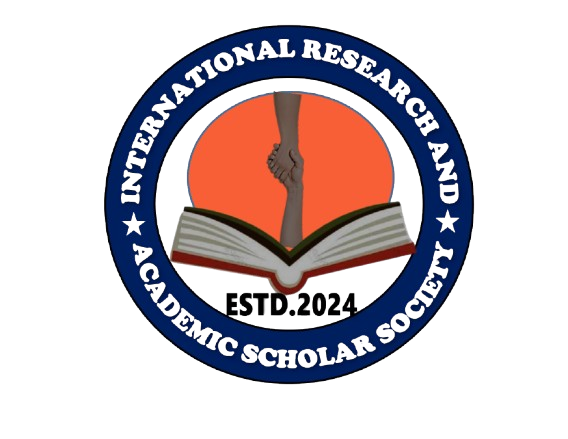IRASS Journal of Multidisciplinary Studies
Issue-5(May), Volume-2 2025
Li Ming*
University of Shanghai Science and Technology, Shanghai
1-4
![]() https://doi.org/10.5281/zenodo.15321651
https://doi.org/10.5281/zenodo.15321651
Offor, Ugochukwu Ifeyinwa (PhD...
Department of Educational Foundations, Nnamdi Azikiwe University, Awka
5-11
![]() https://doi.org/10.5281/zenodo.15361980
https://doi.org/10.5281/zenodo.15361980
Ujunwa Nchedo Ogechukwu, Lucky...
Department of English Language and Literature, Faculty of Arts, Nnamdi Azikiwe University, Awka, Nigeria
12-20
![]() https://doi.org/10.5281/zenodo.15362013
https://doi.org/10.5281/zenodo.15362013
JAKPA Grace Ufuoma* , IBEGBULE...
Department of Office Information and Management, Southern Delta University, Ozoro Nigeria
21-25
![]() https://doi.org/10.5281/zenodo.15377565
https://doi.org/10.5281/zenodo.15377565
Dr. Pippie Hugues* , Ms. Esthe...
Policy Analyst with Nkafu policy Institute and a Research Coordinator with Conflict Lab
26-28
![]() https://doi.org/10.5281/zenodo.15397602
https://doi.org/10.5281/zenodo.15397602
Akinyemi B. K., Madina P. * ,...
Department of Crop Production, College of Agronomy, Joseph Sarwun, Tarka, University Makurdi, Nigeria
29-34
![]() https://doi.org/10.5281/zenodo.15397819
https://doi.org/10.5281/zenodo.15397819
Munaf Marza Neama* , Alyaa kad...
Al-Qadisiyah University- College of Administration and Economics
35-44
![]() https://doi.org/10.5281/zenodo.15478231
https://doi.org/10.5281/zenodo.15478231
Ahmad Ally Maguo*, Prof Magret...
The Open University of Tanzania
45-54
![]() https://doi.org/10.5281/zenodo.15523488
https://doi.org/10.5281/zenodo.15523488
